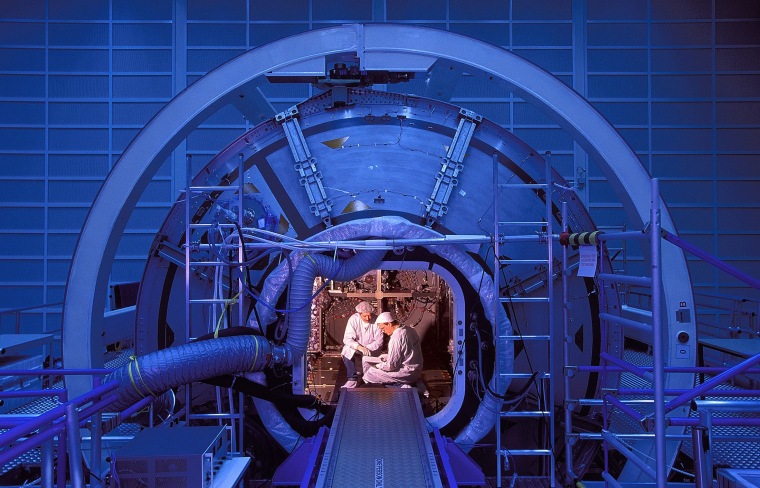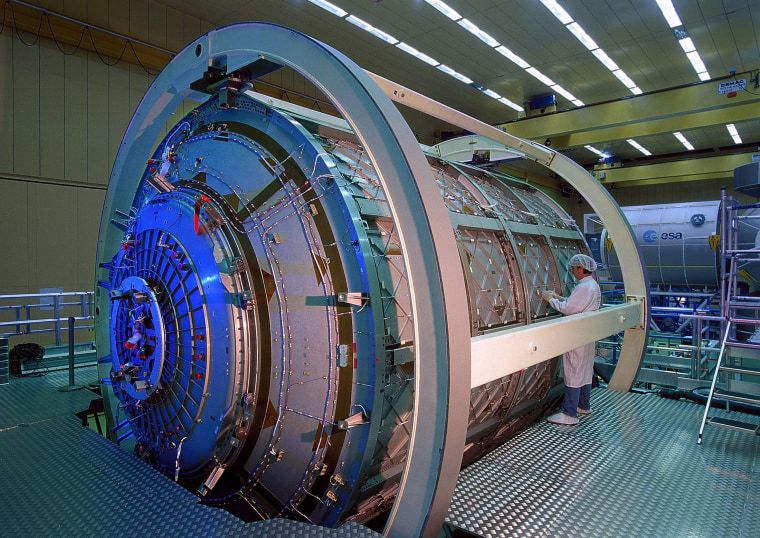The European Space Agency on Tuesday marked the completion of construction of the Columbus laboratory, which will allow researchers to conduct a wide range of experiments on the international space station.
The lab, which took 10 years to complete, will be shipped to Cape Canaveral, Fla., at the end of the month, and is scheduled to be flown aboard a space shuttle to the station in the second half of next year.
The $1.1 billion project was led by the space transportation unit of the European Aeronautic Defense & Space Co., and involved 40 firms from 10 European Union countries.
Included in the costs was $70 million to establish the Columbus Control Center outside of Munich in Oberpfaffenhofen, ESA official Dieter Isakeit said. The center was completed in 2004 and will control operations of the European elements of the space station.
German Chancellor Angela Merkel, who attended a ceremony in Bremen marking the successful construction of the lab, said the project is indicative of Germany's commitment to the European space program.
"It is a small, but important sector where a country like Germany, which is known as a land of high technology and leading science, stands up very, very well," she said.

Earth-based scientific researchers, with the help of space station astronauts, will be able to conduct experiments in the weightlessness of orbit during its planned 10-year operational lifetime, the ESA said.
The 15-foot (4.5-meter) diameter cylindrical module provides 2,650 cubic feet (75 cubic meters) of space to house an entire suite of science instruments.
It can house 10 payload racks, each the size of a telephone booth and capable of hosting its own autonomous and independent laboratory, complete with power and cooling systems, and video and data links back to researchers.
It is designed for three astronauts to work inside comfortably together at the same time, Isakeit said.
